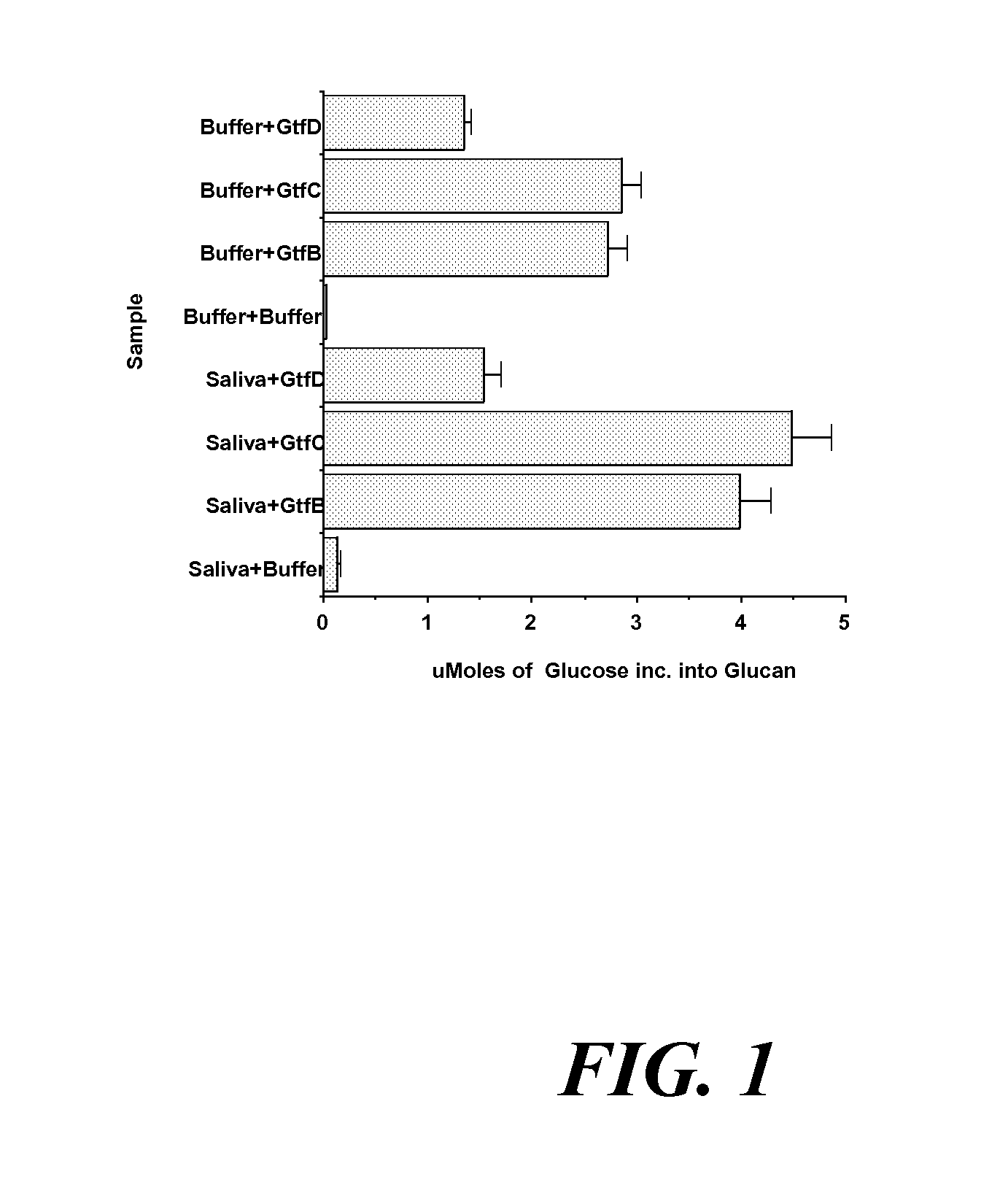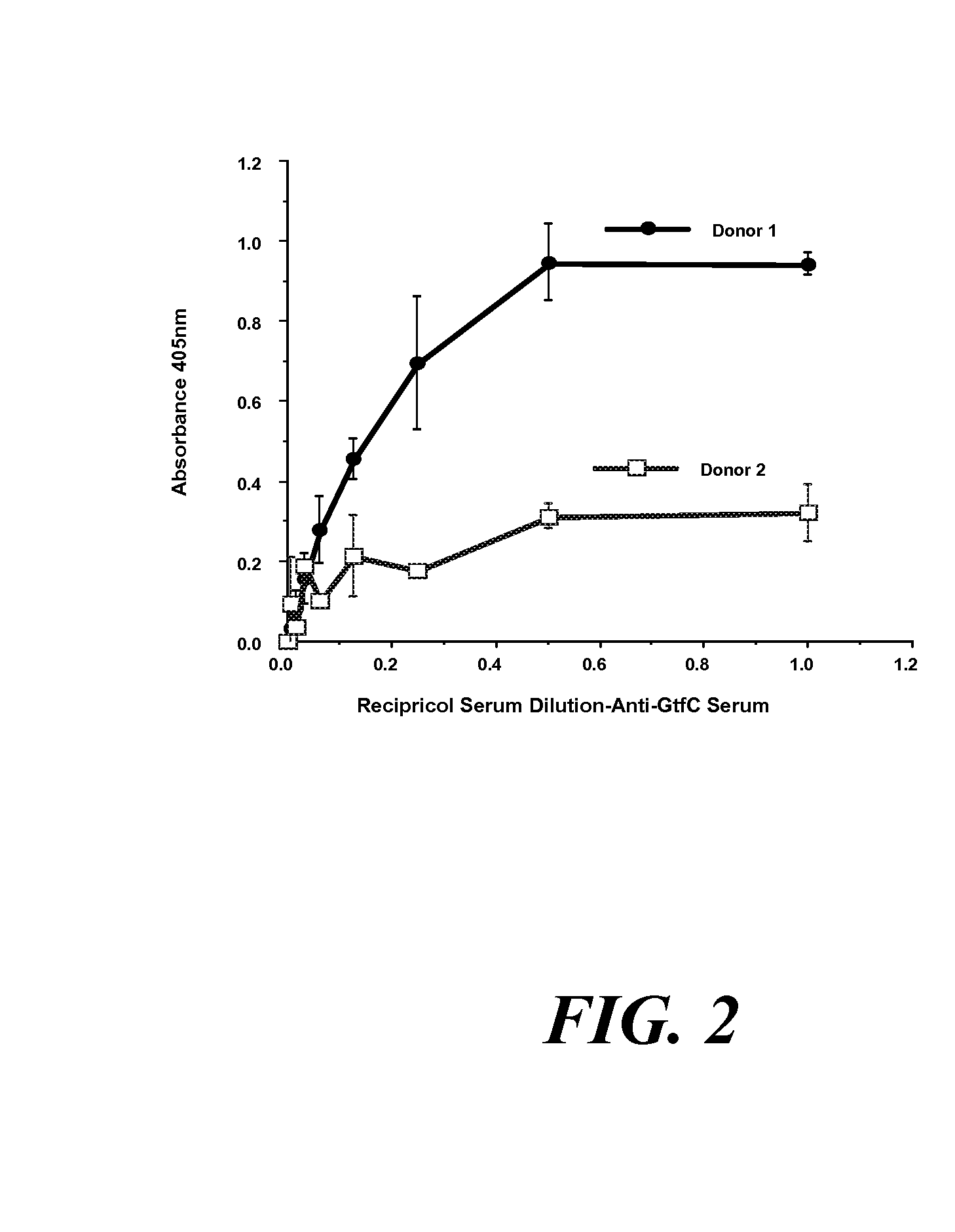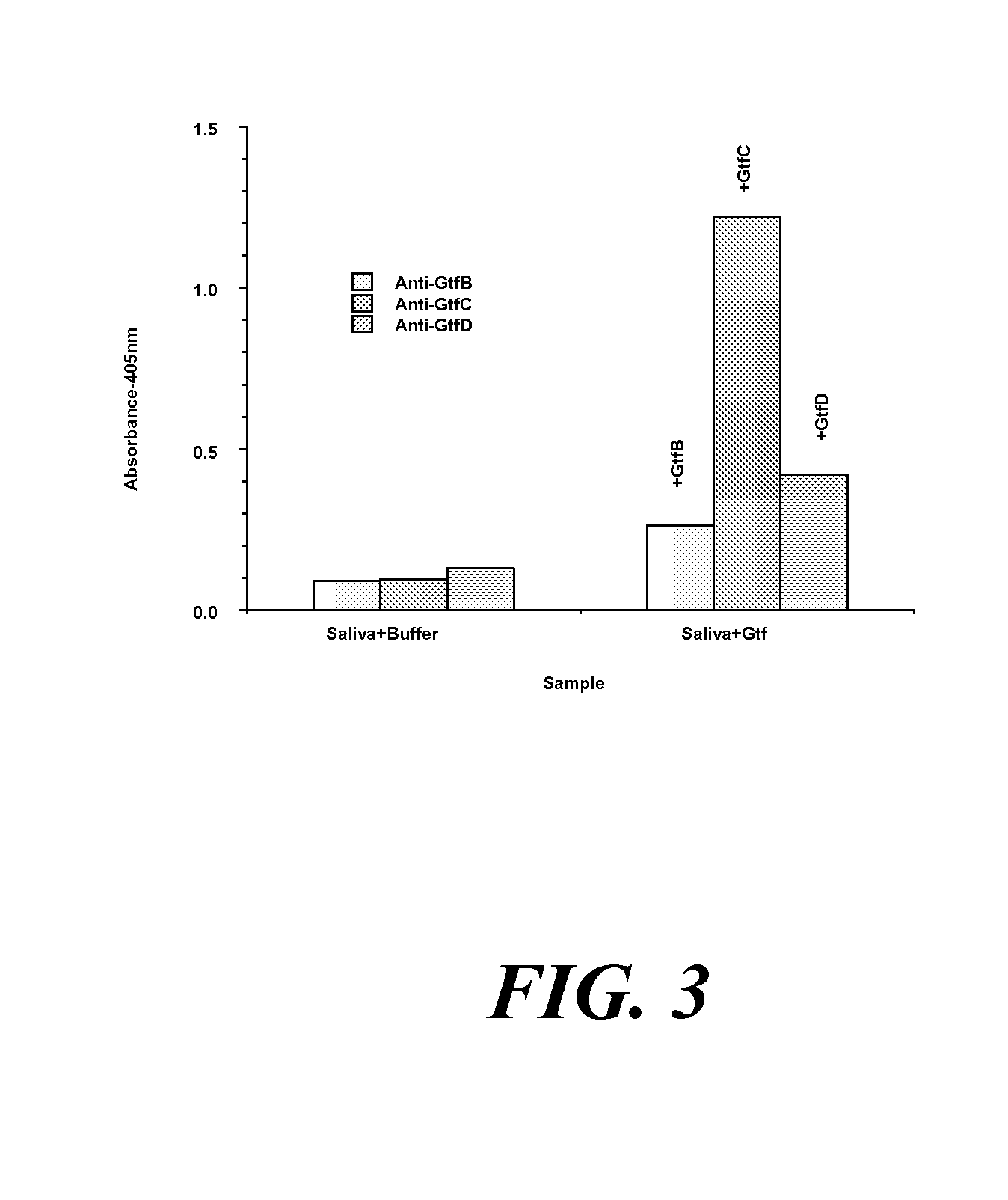Antibodies and methods for predicting dental caries
- Summary
- Abstract
- Description
- Claims
- Application Information
AI Technical Summary
Benefits of technology
Problems solved by technology
Method used
Image
Examples
example 1
Studies to Determine Correlation Between Quantities of Gtf Enzymes in Saliva and the Number of Carious Lesions
[0065] Experimental investigations were performed to determine whether the quantities of GtfB, GtfC, or GtfD, and / or overall Gtf activity in young subject saliva correlates with the number of carious lesions. Such investigations were helpful in developing a simple calorimetric test for caries activity, based on monoclonal antibody to Gtf, which can be used by dentists in their office.
[0066] Gtf has been chosen as a marker for caries activity for several reasons.
[0067] First, Gtf is a proven virulence factor in the pathogenesis of dental caries (Yamashita et al., “Role of the Streptococcus mutans gtf Genes in Caries Induction on the Specific-Pathogen-Free Rat Model,”Infect Immun 61:3811-3817 (1993), which is hereby incorporated by reference in its entirety).
[0068] Second, Gtf has been identified in salivary pellicle (Rolla et al., “Identification of IgA, IgG, Lysozyme, Al...
example 2
Studies Involving Polyclonal Antiserum Raised to GtfC
[0082] Gtf was detected in clarified whole human saliva by using ELISA using polyclonal antiserum raised to GtfC (FIG. 2). GtfC was focused on since the preliminary data indicated that Gtf activity found in whole saliva has properties of GtfC prepared from mutans streptococci (Vacca Smith et al., “Characterization of Glucosyltransferase of Human Saliva Adsorbed onto Hydroxyapatite Surfaces,”Caries Res 30:354-360 (1996), which is hereby incorporated by reference in its entirety). It was found that saliva with high Gtf activity (Donor 1), as determined by direct activity assay (2.0 units of activity / milliliter of saliva), reacts with antiserum specific for GtfC, while saliva with low Gtf activity (Donor 2), as determined by direct activity assay (0.65units of activity / milliliter of saliva), does not react with the antiserum as shown below in FIG. 2. For these experiments, a unit of Gtf activity was defined as that amount of Gtf req...
example 3
Studies Using Polyclonal Sera Rendered Monospecific to a Particular Target Gtf Enzyme
[0083] ELISA assays were also performed using polyclonal sera rendered monospecific to particular target Gtf enzyme, as shown in FIG. 3. The polyclonal sera raised to GtfB, GtfC, or GtfD were made monospecific for their target Gtfs by exposing these antisera to hydroxyapatite beads coated with non-target Gtfs, thereby removing antibodies cross-reactive to non-target Gtf enzyme. Monospecificity was determined by ELISA assay. To determine the ability of the monospecific antisera to recognize endogenous Gtf in clarified whole human saliva, and to recognize exogenous target Gtf added to such saliva, clarified whole human saliva was mixed with either buffer, GtfB, GtfC, or Gtf D and coated onto an ELISA plate.
[0084] The samples were probed with primary antisera: either anti-GtfB sera, (for saliva alone or saliva mixed with GtfB), anti-GtfC sera (for saliva alone or saliva mixed with GtfC), or anti-GtfD...
PUM
| Property | Measurement | Unit |
|---|---|---|
| Fluorescence | aaaaa | aaaaa |
Abstract
Description
Claims
Application Information
 Login to View More
Login to View More - R&D
- Intellectual Property
- Life Sciences
- Materials
- Tech Scout
- Unparalleled Data Quality
- Higher Quality Content
- 60% Fewer Hallucinations
Browse by: Latest US Patents, China's latest patents, Technical Efficacy Thesaurus, Application Domain, Technology Topic, Popular Technical Reports.
© 2025 PatSnap. All rights reserved.Legal|Privacy policy|Modern Slavery Act Transparency Statement|Sitemap|About US| Contact US: help@patsnap.com



